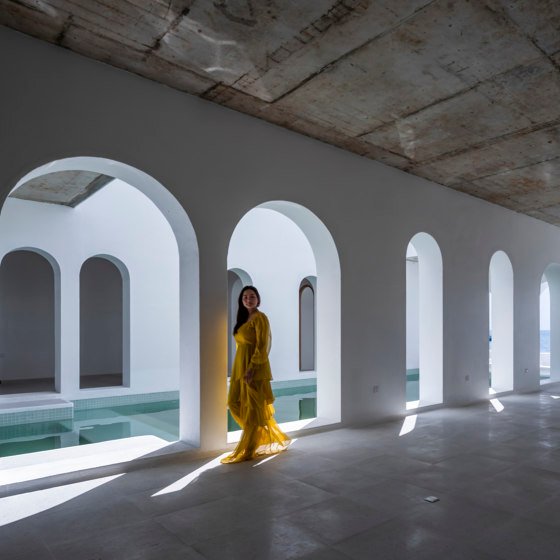Doozy Entry Artwork Gallery / FAR WORKSHOP
Doozy Access Art Gallery / FAR WORKSHOP


Text description provided by the architects. We were commissioned by Doozy Access gallery to reshape an industry warehouse located next to Longwu Road in Shanghai. At the same time artist group, Martin Goya Business was invited during the renovation to experimentally curate a first art show on the construction site. This is a warehouse renovation project with an area of 500 square meters. The existing warehouse used to be a glass production factory with two massive concrete beam rows sitting along with the building internally. Similar to most of the factories pursuing spatial efficiency and economy, the facade of the building reflects its internal rhythm by repeating window frames in each bay. In this project, however, we attempt to disturb such rhythm by weaving completely different spatial language into it and making the facade fragmentally, incompletely, and bizarrely. Three spatial objects are designed to insert into the existing facade. We deliberately make the language of these objects inconsistent but spatially connected in narrative with the internal stage (exhibition hall) and ‘black


Object 1: Snout lens – Degas’s backstage peeping. ’Similar to the antique camera, the object has a lens popped out from a black curtain to spatially connect visitors and internal ‘backstage’.


Object 2: Volumes of Perspective paths. Following the lens concept of the first object, we attempt to solidify the invisible volumes of peeping perspective paths towards the internal stage (exhibition hall) and insert these materialized volumes into the existing wall as a foreign language to disturb the original rigid facade.


Object 3: Off-axis stacked volume. Finally the main entrance. We seal the original gate but preserve its frame and spatial depth, therefore creating the contrast against the position of our designed entrance object. Passing the cave-like low ceiling hole, the internal grand space reveals.

Black curtain. The grand hall space is imagined as a performance theater, the front stage is the exhibition hall, whereas the office and photography space becomes the backstage, in between the black curtain is the division. Originally a colorful black curtain was designed to be made of various fragments of black fabric materials and textures such as cotton cloth, PVC cloth, etc. But the idea of a fabric curtain was suspended when the curtain structure was erected. The structure with the curving edges is strong enough to imply the relationship between front and backspaces. Meanwhile, the existence of the structure triggers the provisionality and flexibility of space use, which is much more meaningful compared to merely curtain division.



The interior photography took place after an art exhibition. We deliberately recorded the trace of space use by not removing any existing items as a confrontational gesture against over-refinement and pretentious magazine photos. During the construction, Martin Goya Business (artist group) conducted an experimental art practice by painting graffiti on the entire internal incomplete surface (wall, floor, column, etc) with graffiti. After the exhibition, all graffiti was washed out completely and all surfaces were painted back to white. The entire process became extraordinary performance art.











